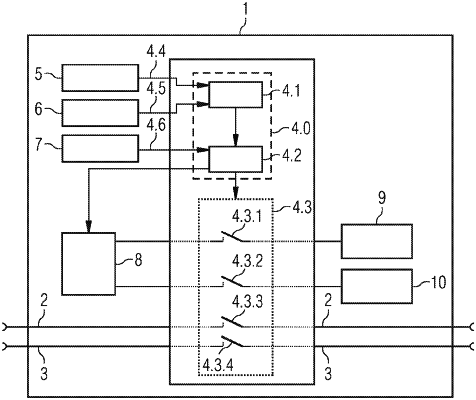| CPC G06F 21/62 (2013.01) [B61L 25/04 (2013.01); B61L 27/04 (2013.01)] | 12 Claims |

|
1. A configuration for securing a rail vehicle against actions of unauthorized persons, the configuration comprising:
an electronic vehicle control system;
a drive enabling device controlling drive components for an operation of the rail vehicle and connected to said electronic vehicle control system;
a high-voltage enabling device connected to said electronic vehicle control system, said high-voltage enabling device controlling high-voltage components for the operation of the rail vehicle;
a locking device with controllable switches including a first switch connected between said electronic vehicle control system and said drive enabling device, such that a control of the drive components can be suppressed when said first switch is open, and executed when said first switch is closed, said controllable switches further including a second switch connected between said electronic vehicle control system and said high-voltage enabling device, such that a control of the high-voltage components can be suppressed when said second switch is open, and executed when said second switch is closed; and
an enabling device, wherein for control of said controllable switches, said locking device is connected to said enabling device which, further to an authentication of an authorized person, closes said controllable switches, in order to permit respective controls, and thus the operation of the rail vehicle.
|